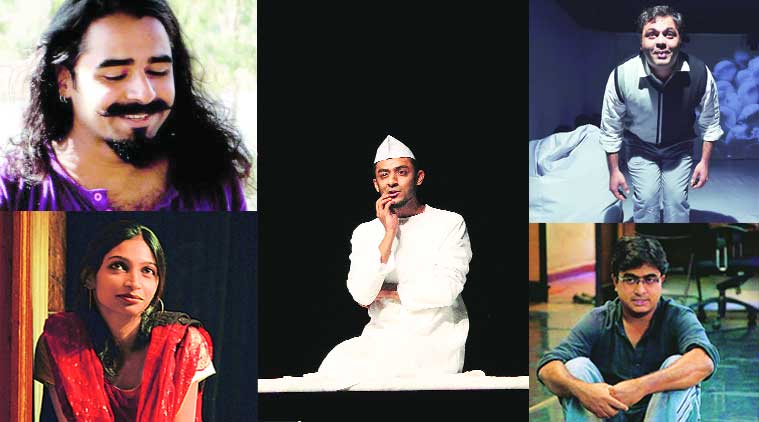Looking forward 2015: Senior thespians spot promising talents on stage
Senior theatre persons spot some promising talents of the stage
 (Left to right) Sujay Saple; Mallika Taneja (Source: Express photo by Kartikey Shiva); Ankit Chadha (Source: Express photo by Nicky Chandam); Mohit Takalkar; Abhishek Majumdar
(Left to right) Sujay Saple; Mallika Taneja (Source: Express photo by Kartikey Shiva); Ankit Chadha (Source: Express photo by Nicky Chandam); Mohit Takalkar; Abhishek Majumdar
Mahmood Farooqui
Ankit Chadha is a writer and a performer — a double bill, given that he creates his own scripts and presents them. He is also the only one I have allowed to present dastangoi solo. Ankit has created eight scripts — which is quite a lot — and performed these. One of these was a parody of me, but his other works have included Dastan Dhai Aakhar Ki on Kabir, and Dastan Khusrav-e-Shireen Sukhan on Amir Khusrao. He has collaborated with musicians as part of the Kabir Festival in Mumbai, and last year he won awards at the Short and Sweet Festival for his performance, Dastan Ek Chhoti Si Cheenti Ki on corporate culture.
ALSO READ: New Year Predictions 2015: What stars have in store for you
Maya Krishna Rao
Mallika Taneja represents the intelligent, modern woman on stage. She is a thinking person. We’ve watched her in a range of plays — The Winter’s Tale, Taramandal, Ich Bin Fassbinder — but she is also a director and an organiser who represents the new culture of performances that is emerging in cities. Recently, Mallika organised a festival called Lost & Found in which performances were held away from the traditional venues, in Pitampura, Vasant Kunj and Sarita Vihar in Delhi. She got together theatre, music, dastangoi performances and workshops and put these out there in the new venues. I would call her an artiste-interventionist.
ALSO READ: 2015: The technology year
Atul Kumar
Sujay Saple is all of 28, Mumbai based and has worked with us in The Company Theatre as an actor in many performances. Sujay has had an amazing run of participatory influences, right from Adishakti in Pondicherry to working with Adil Hussain in Hampi in his theatre residency. He has also emerged as one of the most exciting lighting designers of the theatre community in India. Without Sujay, it would have been impossible for us to create the international theatre residency that we can now boast of in Kamshet. This is common achievement compared to the journey Sujay has set out on as a director. Questioning each and everything he has learnt over the years, Sujay has left behind the conventional text-based linear theatre productions and is dabbling with movement, gesture and dance in space. His first work, last year, in this realm, was based on the writings of Haruki Murakami although very little text was used. His second piece has come out recently and is, for me, a fitting tribute to Pina Bausch, called Moonfool. Sujay is changing the game in theatre by moving away from the obvious methodologies and skill sets and exploring form as well as content.
Manav Kaul
I have been following Abhishek Majumdar’s work and he’s definitely a talent to watch out for. Kaumudi, which he wrote and directed, is my favourite this year. The play tells the touching story of an aged artist losing his eyesight, in a beautiful way and Majumdar’s treatment makes it an insight into the human psyche and its complexities. In Gasha, a play that explores the Kashmiri Pandit and Kashmiri Muslim issue, his direction not only touches hearts but is also very entertaining. I look forward to his new plays in 2015.
Sunil Shanbag
Mohit Takalkar has been around for a while and is a big voice in Marathi theatre, but I believe he is really going to emerge next year with renewed inspiration. I like that, instead of finding a formula and sticking to it, Takalkar ventures into a new territory every time despite setbacks. I’m looking forward to watching his latest play, F-1/105, that has just opened. It explores Indian society through the filter of colour. Takalkar and his playwright did a great deal of research on how people respond to colours and what they associate with different hues. It’s a very interesting approach, especially in India where colours have also come to be associated with ideologies.


- 01
- 02
- 03
- 04
- 05

























